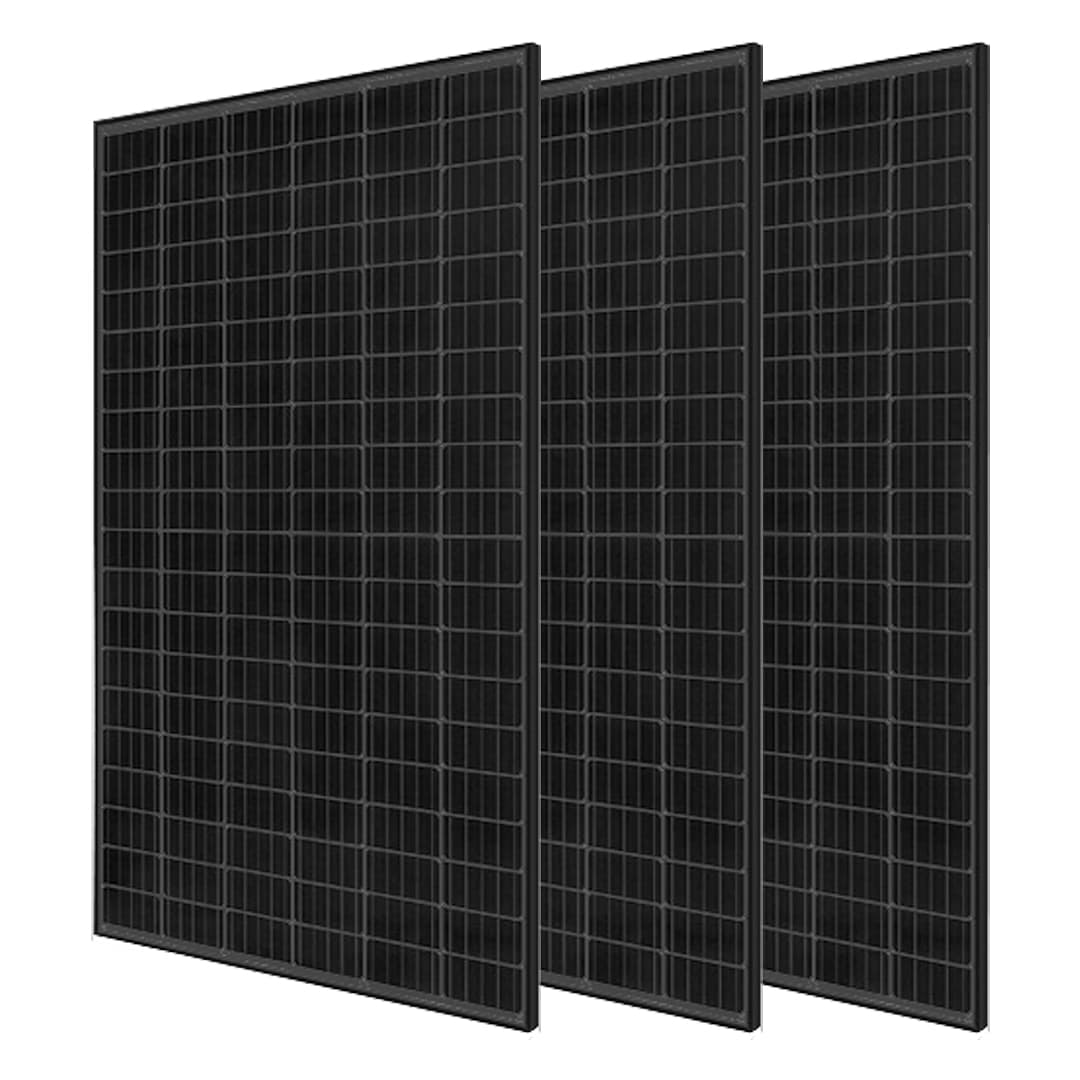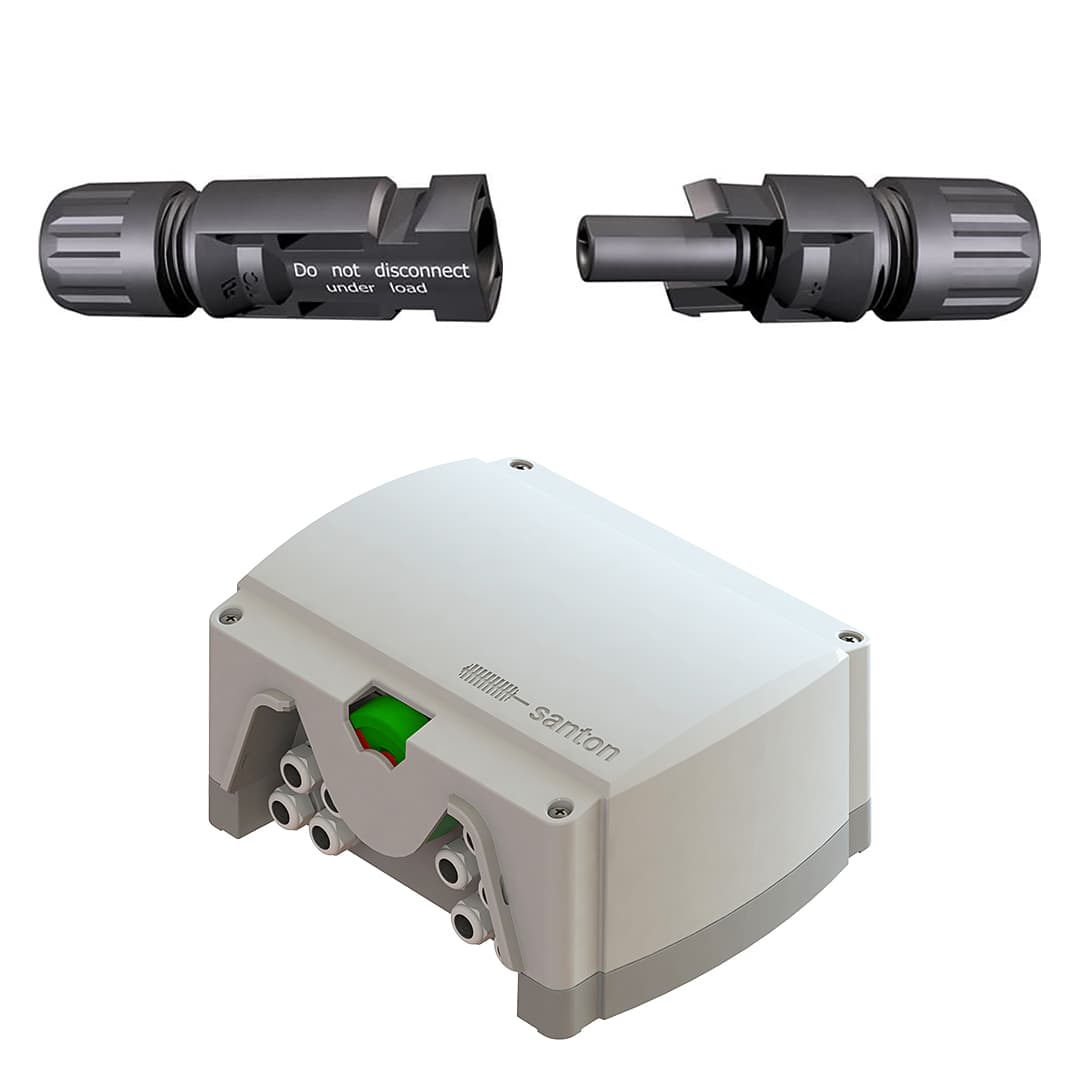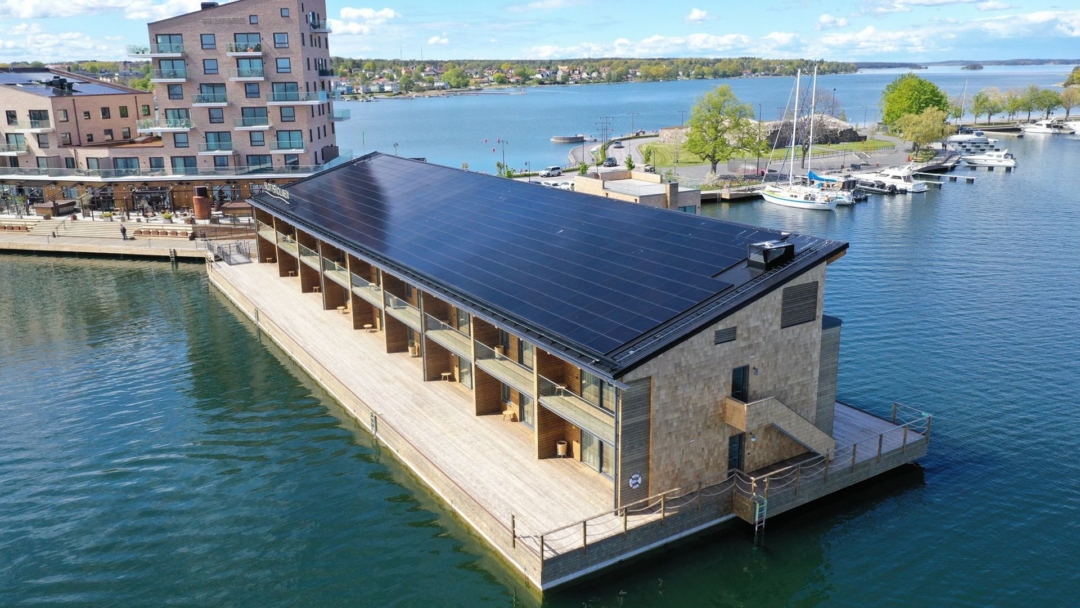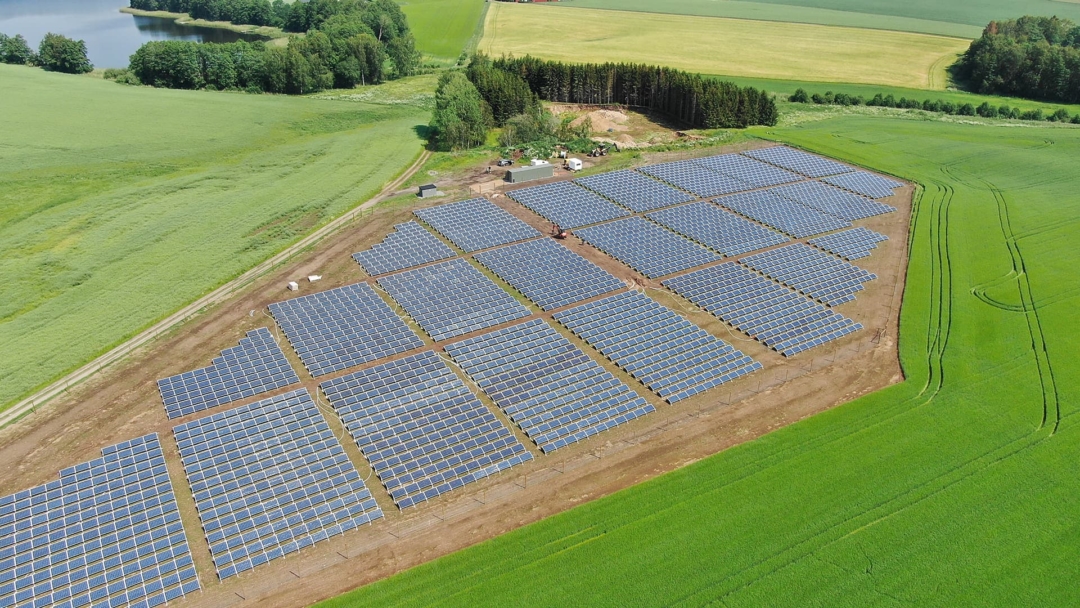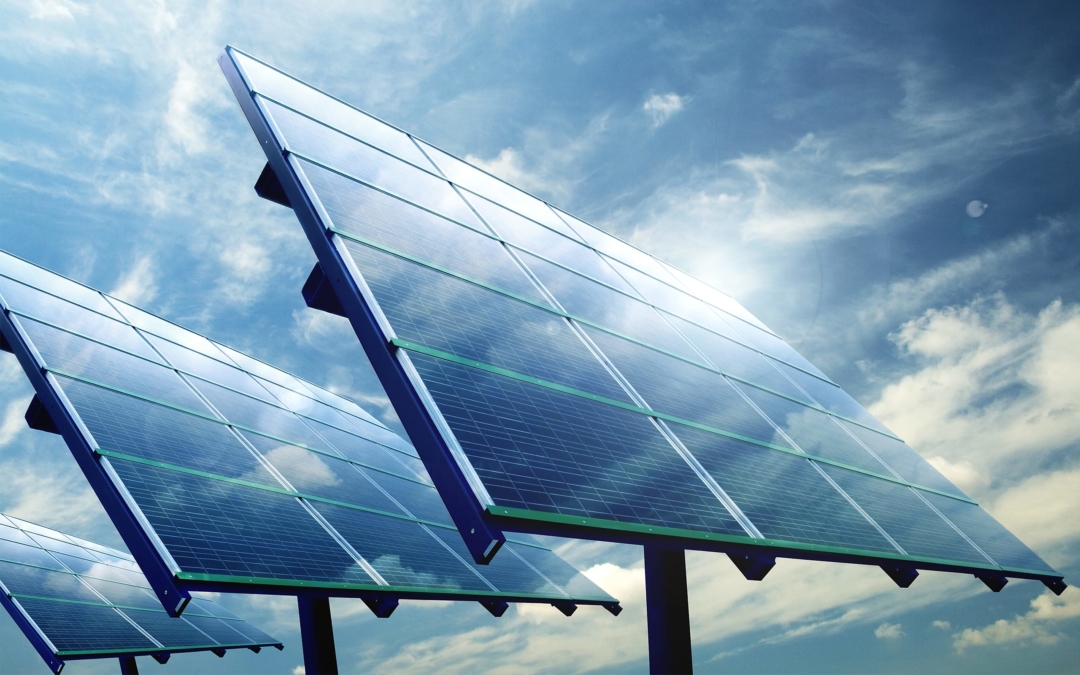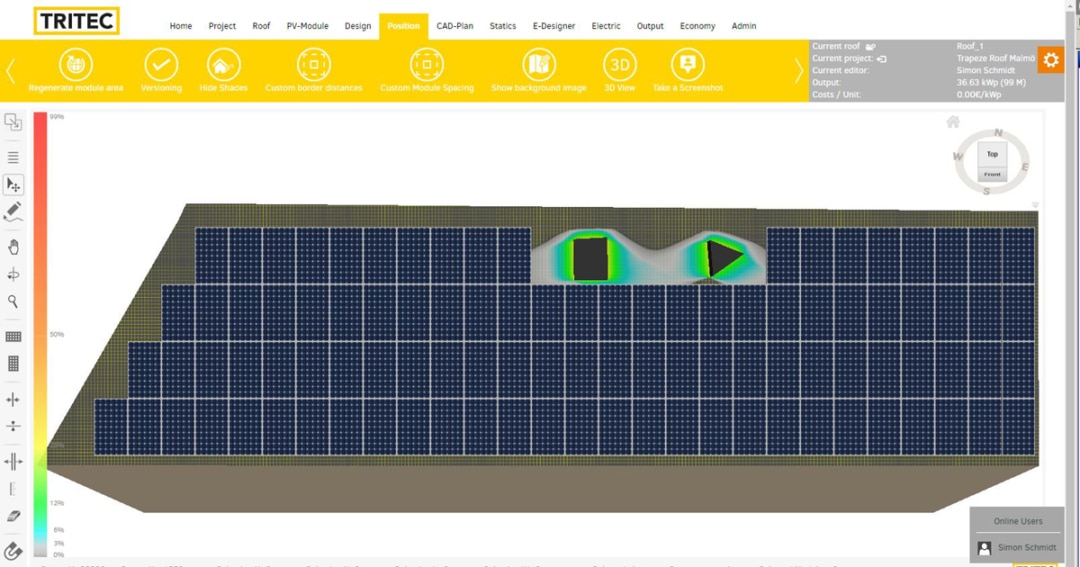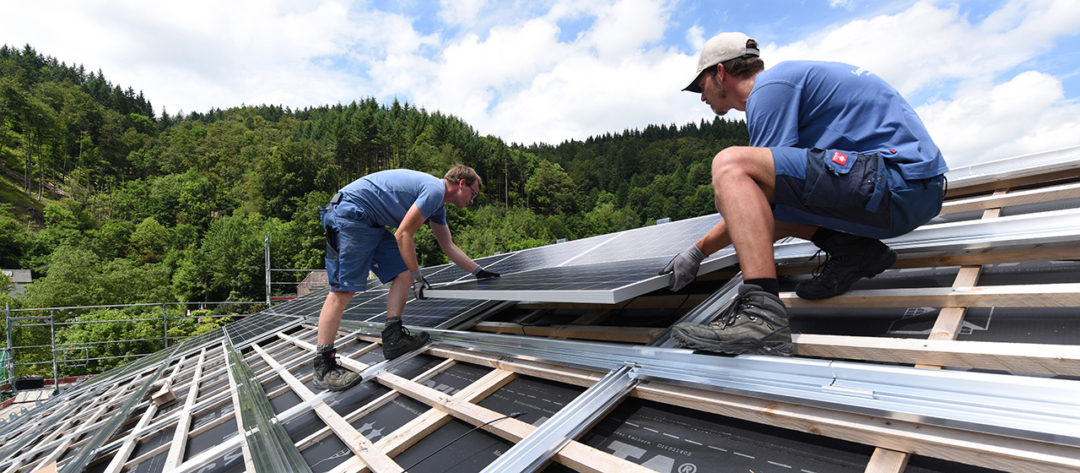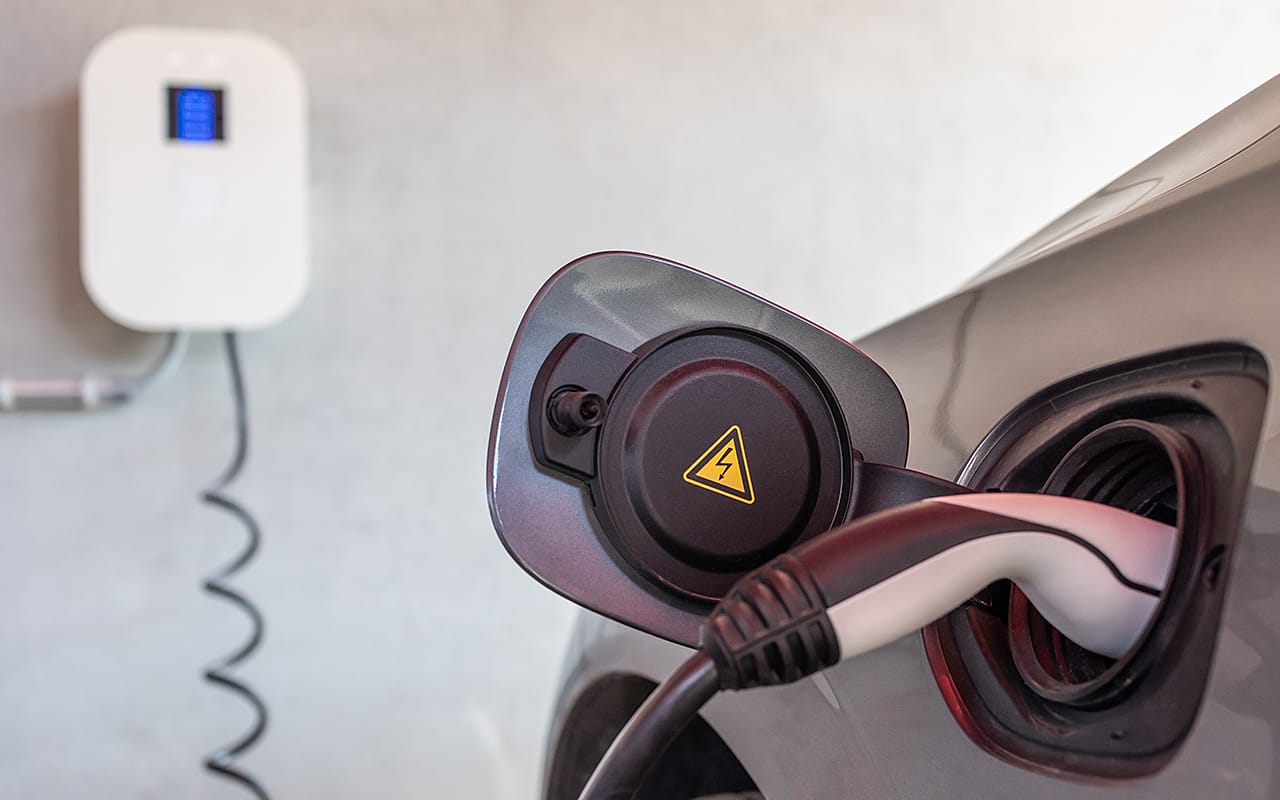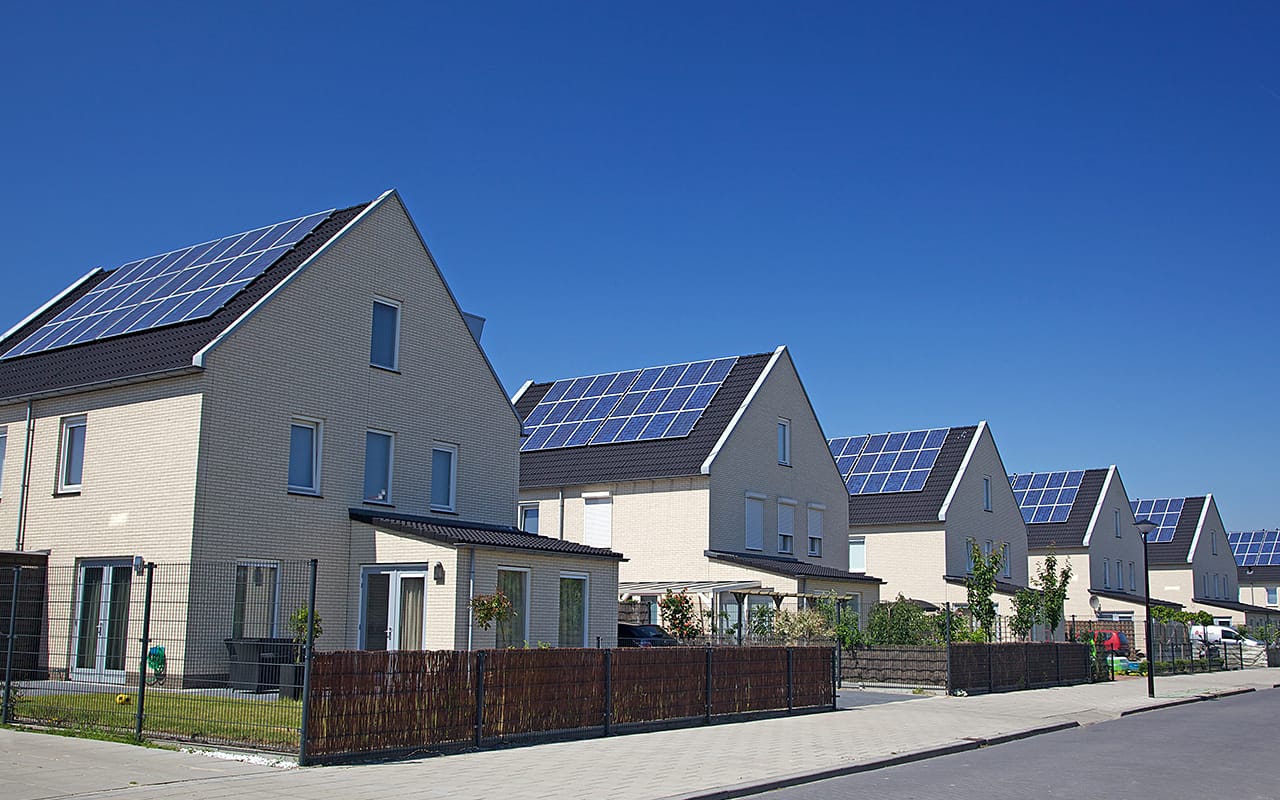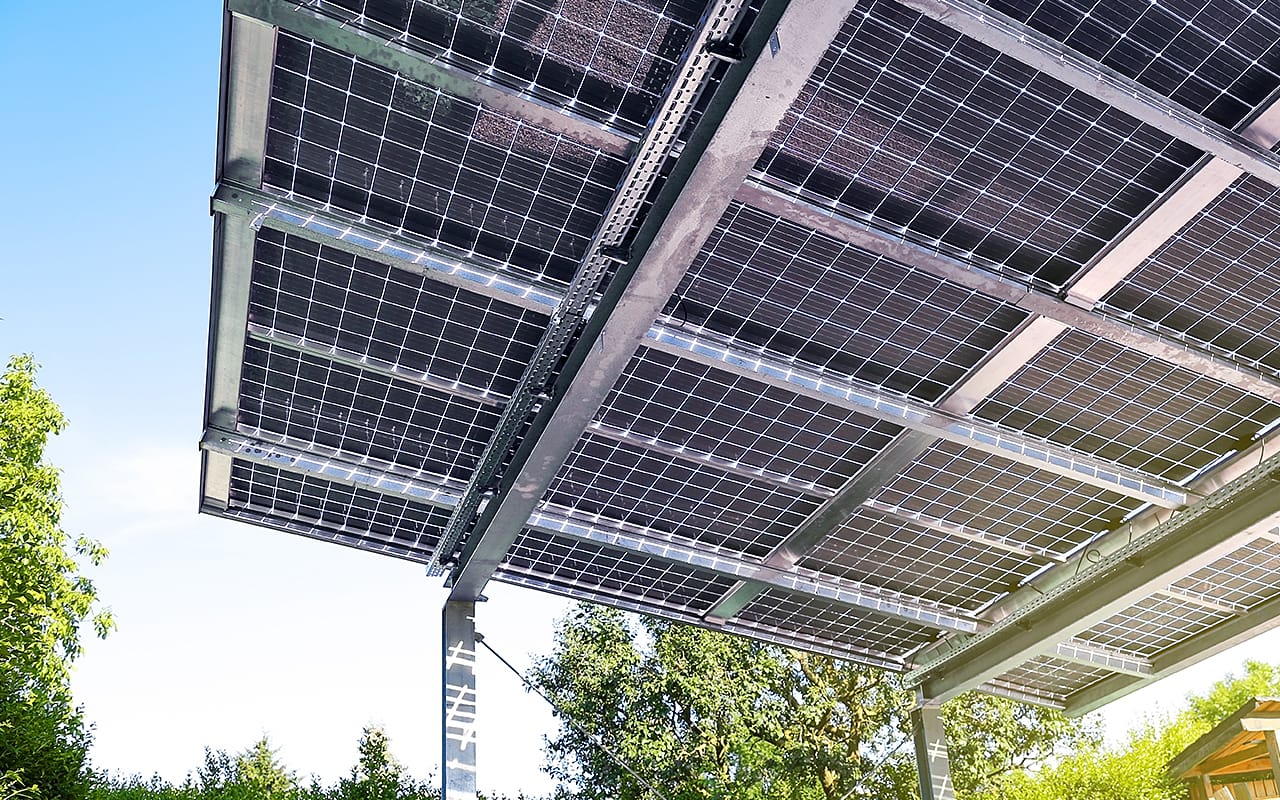PV-Anlage Guide - everything you need to know about photovoltaic systems

Everything you need to know about photovoltaic systems - from the function to the history from space travel to planning your own photovoltaic system (PV-system).
What does a photovoltaic system do?
A photovoltaic system converts incident sunlight into electricity. Its most important components are solar modules in which solar cells are connected in series or in parallel. These solar modules perform the conversion of solar radiation into electricity.
The small but subtle difference between a photovoltaic and solar system
The terms photovoltaic system and solar system are often incorrectly used interchangeably. A solar system is a system that converts solar energy into another type of energy - but not necessarily into electricity. In addition to the photovoltaic system, the solar thermal system is thus another one that falls under the term solar system. The latter converts solar energy into heat, which can then be used for heating or hot water.
How does a solar cell work?
The central components of a photovoltaic system are the solar modules with their solar cells. The cells are made of semiconductor material. When the tiny photon particles of sunlight hit this material, they trigger a current flow. In this way, the light energy is converted into electrical energy, or more precisely: into electricity, which we all use every day. This process is called a photoelectric process. The resulting current is a direct current. It can either be consumed directly, stored in a battery or fed into the public electricity grid. However, because most electrical devices and also the electricity grid require alternating current, this direct current must still be converted into alternating current with the help of so-called inverters. Since solar radiation is always available - regardless of how it is used - solar electricity belongs to the group of renewable energies (also known as regenerative energies).
History: From space to the roof via the calculator
The first solar cells came from the exciting field of space travel. In the 1950s, they were used in satellite technology to generate electricity. They were made of silicon and had an efficiency of 10 %. On Earth, they were first used in photographers' exposure meters. Until the 1970s, however, solar cells were mainly used in space.
Rethinking energy production
The severe oil crisis of 1973-74 and the tragic accidents with nuclear power reactors in Harrisburg and Chernobyl led to a rethinking of energy production. Renewable energies came more to the fore for the first time and the use of solar cells on earth was suddenly under discussion. This led to increased investment in research and development of solar cells around the world in the 1980s.
Due to the efforts made from then until today, the efficiency of silicon solar cells has almost doubled. While the first solar cells were still used for pocket calculators and other small devices, today they have a steadily increasing share of currently 7.4 % of the total electricity production in Germany.
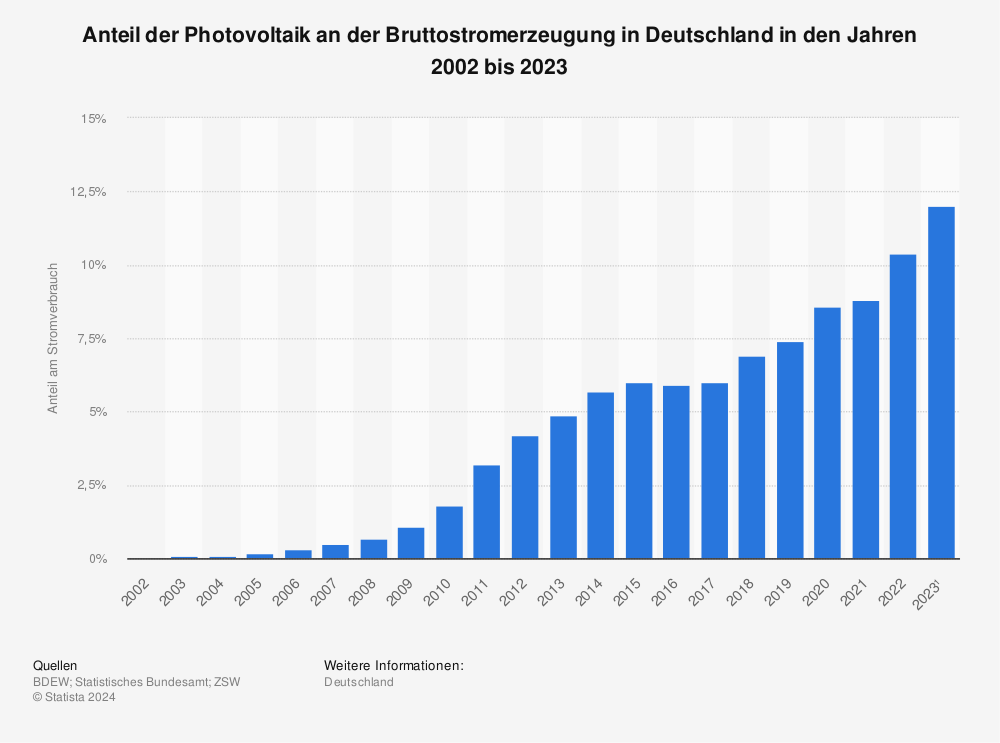
You can find more statistics at Statista
What you need: Components of the photovoltaic system
- PV Mounting system
- Solar modules with their solar cells
- Solar inverter
- Electricity storage
- Cables & Connectors
- Bidirectional meter
No firm, secure hold without PV mounting system
For the PV mounting systems, a distinction is made between on-roof or in-roof systems and clampor insertion systems. There are also corresponding systems for flat roofs and for outdoor use. (see application areas). For on-roof systems, suitable solutions are available for every roof covering - e.g. for tiles, trapezoidal sheet metal, standing seam sheet metal or Wellethernit.
Solar modules: A unit made up of many small cells
Solar modules are made up of several solar cells. These are usually based on the element silicon. Other semiconductor materials used for the production of solar cells are cadmium telluride (CdTe) and gallium arsenide (GaAs). An interesting recent development are tandem solar cells, which are combined from different semiconductors.
The silicon solar cells are either polycrystalline or monocrystalline. The monocrystalline solar cells consist of a single silicon crystal. They are more expensive and more difficult to produce, but have a better efficiency of up to 20 % and more. Polycrystalline solar cells consist of several silicon crystals. They are cheaper and easier to produce, but have a significantly lower efficiency of 12 % to 16 % than monocrystalline cells.
Thin-film cells are another frequently used type of solar cell. In production, the semiconductor material is vapour-deposited or sprayed onto a carrier. This carrier can be made of metal, plastic or glass. The semiconductor is often amorphous silicon, copper indium diselenide (CIS) or cadmium telluride. These solar cells are cheap to produce, but at 4 % to 10 % they have a much poorer efficiency than the other cells.
Solar inverters turn direct current into alternating current
The solar inverter converts the DC voltage of the PV system into AC voltage. There are inverters for grid-connected systems and for stand-alone systems, and they are also differentiated according to the maximum number of networked modules.
An off-grid system is a PV system that is not connected to the public grid. It is used, for example, as a house system in remote areas, as a garden system or as a system in a mobile home. An off-grid system is always equipped with a battery from which the inverter draws power. The input of the stand-alone in verter is therefore connected to the battery, the output to the consumer. However, different end consumers require different voltages. Therefore, the output voltage is regulated by the inverter. When purchasing a stand-alone inverter, you must ensure that the maximum output voltage is sufficiently large for the customer's planned use.
Exactly one solar module can be connected to a module inverter. If there are several modules, several module inverters must also be used. This makes sense if the individual modules have very different outputs and are oriented differently. They are mainly used in small systems.
One or more strings of solar modules run together in a string inverter. Because of their good price-performance ratio, they are very popular for small and medium-sized systems.
Multistring inverters are mainly used in larger systems. Several strings run together in them. Several MPP trackers ensure that each string always remains at the optimal operating point. MPP = Maximum Power Point.
In large systems there are central inverters. They are useful when a large number of strings are aligned in the same way and have the same inclination.
With a power storage unit, the system really pays off
In stand-alone systems, electricity storage systems serve to make the user independent of the current solar radiation. These electricity storage units are usually accumulators, or batteries for short. In the past, they were mainly manufactured as lead batteries, but now lithium titanate batteries are more widespread because of their better efficiency.
In the case of grid-connected systems, electricity storage systems serve to increase the share of electricity self-consumption. The higher the self-consumption, the more economical the PV system is, as the feed-in tariff is now comparatively low.
Cables and plugs for the right connections for PV systems
Photovoltaic cables and plugs form the connection between the solar modules and the other components of the PV system. They should be of first-class quality and weather-resistant. One of the first connector systems for solar installations came from the company Multi-Contact, which now belongs to the Stäubli Electrical Connectors group. However, the name can still be found in the popular MC3 and MC4 systems, among others.
Bidirectional meter for the overview
With a grid-connected PV system, it is good to know how much electricity you are feeding into the public grid. To measure this, there are so-called feed-in meters. On the other hand, you usually also draw additional electricity from the grid. This is measured by the purchase meter. Instead of using two individual meters, it is advisable to use a bidirectional meter, which grid operators usually rent out.
Photovoltaic systems and their use
The solar roof for more independence from the grid
A distinction is made between on-roof systems and in-roof systems. With on-roof systems, the solar modules are mounted on the roof of the house with the help of a mounting frame. In the case of pitched roofs, the angle of inclination can also be easily optimised. At the same time, it is the simplest and most common way to install a PV system. Various frames are specially designed for sheet metal roofs, tiled roofs, slate roofs and roofs made of corrugated sheet metal. Another advantage is the good rear ventilation of the solar modules. It is important to pay attention to the weather resistance of the mounting materials. Flat roofs usually have no or only a small angle of inclination. Therefore, the solar modules should be angled by at least 6° by the mounting system. An inclination of up to 13° is common.
With an in-roof system, the solar modules replace the roof tiles. On the one hand, this looks better and, on the other, the system is more weather-resistant. However, the installation is more complex and expensive. Cooling the solar modules is also more complex than with an on-roof system and reduces the efficiency by about 0.5 %. In-roof systems are only suitable for tiled roofs that are designed as pitched roofs with a relatively large inclination, as the efficiency is otherwise severely impaired. This solution is not possible for sheet metal or bitumen roofs.
Mini systems for carport, garage, facade and satellites
A miniPV system requires only one to two square metres of space. This makes it ideal for a carport, the façade or a garden shed. You can produce up to 600 W of electrical power with such a small system, depending on the solar modules used. The only technical condition is that the respective roof or façade must be stable enough to support the weight of the solar modules plus mounting system. However, in some federal states you need a permit for a PV system on the carport or garage. Check with your local building authority in good time before purchasing the PV system. You can use the electricity produced in this way to charge your electric car, hybrid plug-in or similar. Of course, you can also use the electricity in your household and thus reduce your electricity bill. However, you cannot produce all the electricity for a household on such a small area.
Ground-mounted system (solar park)
A roof is not a prerequisite for the installation of a PV system. As a PV fan, you are certainly familiar with the impressive pictures of huge solar parks. Here, too, mounting systems are used to make energy generation possible in the open. There are two basically different mounting systems: the fixed mounting and the tracking system.
Fixed installation PV-system
With fixed mounting, a steel or aluminium frame is screwed onto concrete blocks or anchored in the ground. The inclination and orientation of the modules cannot be changed after installation.
The ground-mounted system with fixed mounting has several advantages compared to a roof-mounted system:
- There is usually more space available.
- The orientation can be freely chosen and is not dictated by a roof.
- This means that the inclination can also be adjusted almost at will.
- More surface area also means more modules. Here, it is also worthwhile to use modules with lower efficiency, which are cheaper to procure.
Tracking systems
In tracking systems, the modules track the orientation of the sun. A distinction is made between single-axis and dual-axis tracking. With single-axis tracking, the orientation of the modules changes either horizontally or vertically depending on the position of the sun. Horizontal tracking follows the position of the sun from east to west. In vertical tracking, the solar module faces south and rotates above the horizon, depending on the height of the sun. Dual-axis tracking is a combination of horizontal and vertical tracking.
Advantages of the tracking system:
- The electricity yield of the PV system is significantly higher than that of a fixed installation.
- In Central Europe alone, the increase in current yield is 20 % with single-axis tracking and 30 % with dual-axis tracking.
Disadvantages of the tracking system:
- Higher investment costs are incurred.
- The system requires more maintenance. This increases the operating costs.
- The tracking system again requires electricity.
Floating PV plant
A special form of outdoor installation is the floating PV system. For this, the solar modules are mounted on plastic floats. The investment costs are 20 % to 25 % higher than those of a conventional ground-mounted system on land.
Systems connected to the public grid
Grid-connected systems are also referred to as grid-connected systems. They bear their name because they are connected to the public electricity grid. The majority of all installed PV systems are grid-connected systems.
Non-coupled stand-alone systems
There are also PV plants that are not connected to the public grid. Like an island in the sea that has no connection to the mainland, these are therefore referred to as island systems. Since this also eliminates the possibility of feeding electricity into the public grid, these systems are usually operated in conjunction with an electricity storage system.
How to plan a photovoltaic system
Requirements for the use of a PV system
Before you start planning a photovoltaic system, you should check the prerequisites:
- Do you need a building permit for the plant? You can find out at the local building authority.
- Is the roof strong enough for a PV system?
- Is the solar radiation sufficient to operate the system economically? To answer this question, it is worth taking a look at the "Irradiation Map of the German Weather Service" (see Figure 3). In Germany, however, this is the case almost everywhere.
- What does the financing of the system look like? What subsidies can you take advantage of? You can use a search engine to find various options, for example from the KfW Bank.
Which PV system is the right one?
First of all, you have to decide whether you want a roof-mounted system or a ground-mounted system. For a rooftop system, the following questions arise:
- In which compass direction is the roof oriented?
- Is it a pitched or a flat roof?
- Is there any shading of the roof surface by trees or surrounding buildings?
A south-facing pitched roof with an inclination of about 30° would be ideal. But even if your roof has a pitch between 10°-60° and faces south-east or south-west, it is still suitable for a PV system. The yield is only slightly lower. Care should be taken when felling large trees to prevent shading. Find out beforehand whether it is permitted and what compensatory measures you may have to take.
Learn more about planning a PV system.
Support through PV software
With photovoltaic software, photovoltaic systems can be optimally designed for the respective roof and the modules and inverters used, and at the same time the best possible variant of the PV mounting system can be selected. Ideally, the PV software offers you the following options: inverter design planning, yield calculation with optimised shading areas and string planning.
How many square metres of PV plant do you need?
Depending on whether you want to cover part or all of your own needs, the amount of modules you use will differ. If you are now wondering how many modules need to be installed to cover your energy needs and whether a corresponding area is available, the following article will help you:
→ How to calculate your own demand for your PV system
Leave assembly & installation to the professionals
You should definitely leave the assembly and installation of your new photovoltaic system to a specialist company. In general, we do not advise amateurs to work on their own, as working with electronics is dangerous and can endanger both you and your fellow human beings. In addition, improper installation usually voids the warranty for the components of the solar system.
You can expect these costs
In general, larger PV plants are somewhat cheaper in price per kWh than smaller plants:
- For a small roof with an area of 25 m², the modules cost 216 €/m² or the entire system 5,400 €.
- For a medium-sized roof with an area of 50 m², the modules cost 180 €/m² or the entire system 9,000 €.
- For a large roof with an area of 72 m², the modules cost 172 €/m² or the entire system 12,900 €.
Source: www.solaranlagen-portal.com
How to operate a photovoltaic system
Cleaning: Dirty modules reduce performance
A PV system is exposed to all kinds of environmental influences 24/7, 365 days a year. Gradually, dust, bird droppings, falling leaves, plant pollen, etc. accumulate. Dirt tends to accumulate especially at the junctions between the frame and the glass and is not easily removed by rain and snow. Moss or lichen can even settle there. This means that the PV system must be cleaned at regular intervals. You should only do this yourself if all parts of the system can be reached by telescopic poles, etc. without climbing. Otherwise, you should leave this work to companies that specialise in cleaning photovoltaics . The costs for this vary from region to region. Calculate with 1.00 € to 2.50 € per square metre of module surface.
For cleaning, we recommend lime-free water, a non-aggressive cleaning agent and a cloth or sponge - without scratching elements.
Ensure proper function through maintenance and service
For this purpose, it is best to conclude a maintenance contract with the company that installed the system. The experts already know your system and do not have to familiarise themselves with it. The maintenance includes a visual inspection of the solar modules and a check of the electrical connections and the inverters. The costs for this range from 150 to 250 euros for a single-family house.
Secured with insurance
Since your PV system is constantly exposed to environmental influences, insurance can be well worthwhile. Damage caused by hail, heavy rain or lightning can happen quickly. It therefore makes sense to take out appropriate insurance for your PV system.
A good insurance policy should cover the following risks:
- Fire
- Storm
- Hail
- Snow pressure
- Overvoltage
- Animal bites
- Theft
- gross negligence
Clarify whether tax payments are due
If you do not consume all the electricity produced by the PV system yourself, you become an entrepreneur for tax purposes. The feed-in tariff is the price per kWh,
that the energy company pays you for the electricity you feed into the public grid. The feed-in tariff is therefore also subject to income tax. As long as you do not earn more than 22,000 euros per year with it, you can claim the VAT exemption for small businesses.
If you do not do this, you must pay VAT on both the electricity you feed into the grid and the electricity you consume yourself.
Energy management: feeding into the public grid
To feed your surplus electricity into the public grid, you need a contract with the public energy supplier. They will usually also rent you a feed-in meter or a two-way meter.
The more electricity you consume yourself, the more interesting the PV system is economically. The feed-in tariff is significantly lower than the electricity price you have to pay for the electricity you buy. Therefore, it is usually worthwhile to purchase an electricity storage unit to bridge times with less solar radiation.
After what time a PV system really pays off
According to Frauenhofer ISE, a PV plant generates a return on equity of about 5 %. But every system is different and it also depends on the behaviour of the operator. The important thing is to achieve the highest possible self-consumption of electricity through the use of battery storage and/or intelligent control.
This will become even more important for the future because the feed-in tariff under the EEG is constantly decreasing. At this point in time, it is not possible to assess how the feed-in tariff will then develop.
After how many years a PV system is really worthwhile (after amortisation) depends on the following factors:
- Acquisition costs
- expected electricity yield
- Own consumption share
- Amount of the feed-in tariff
- Development of the electricity price
- Funding costs
- tax payable
As a rule, a photovoltaic system pays for itself after nine to 12 years. With a service life of at least 20 years, you have quite a few years left in which to make a profit.
Funding opportunities for your new photovoltaic system
Both for new buildings and for the modernisation of existing buildings, the KfW (Kreditanstalt für Wiederaufbau) has funding programmes to promote the purchase and installation of photovoltaic systems. The funding consists of low-interest loans with one, two or three interest-free start-up years and terms of up to 20 years.
Federal states, municipalities and cities also offer special funding programmes for the use of renewable energies. These subsidies can also consist of grants towards the investment costs. Various banks and the KfW also offer special solar loans. The special feature of these loans is that the expected feed-in tariff is accepted as collateral for the loans.
About the author
TRITEC has specialised in the generation of solar power through photovoltaics for over 34 years. We are active worldwide in both photovoltaic wholesale and large-scale plant construction. In addition to our proven PV mounting system, we also offer our own intelligent system solutions for the planning, design and performance control of photovoltaic systems, as well as branded products from leading photovoltaic manufacturers.



